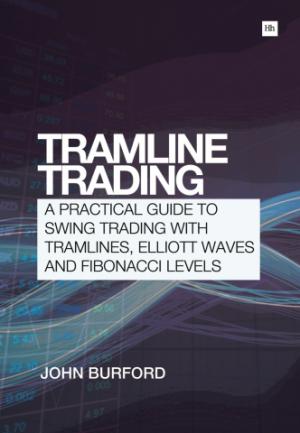
In these weekly articles, I will highlight a share that I believe has an interesting chart pattern. I am primarily a technical trader and use the methods I have developed that I call Tramline Trading. You can read more about my methods in my book Tramline Trading, which you can inspect here.
Most traders and investors make classic errors by chasing a stock near a top and then hang on to it too long during the decline. You will vastly improve your performance by timing your entries and exits more expertly - and that is what I hope to help you with.
My goal in these articles is to cover a share that has an interesting chart. I I developed my tramline system over several years to give me a set of rules which can provide me with trade entries at low risk. The low risk requirement was crucially important because no matter how firmly I believe in my trade, I could be wrong! And I wanted my wrong trades to hand me the smallest possible loss to my account. I figured the winners would take care of themselves.
My hope is that you glean useful ideas and employ at least some technical analysis to bolster your returns. In trading as well as investing, timing is a key factor in your eventual returns.
Update on Aberdeen Asset Management
I covered Aberdeen Asset Management (ADN) 30 March when the market was pushing into new high ground. Many investors treat new highs as a bullish reason to either take new positions or hold onto existing ones. But because of the fabulous Elliott wave pattern on the weekly chart, I cast great doubt on this bullish scenario.
This was the position back in March:
[Chart removed]
And this was my analysis then: the market had gone nowhere in two years and was making a very large wedge pattern entirely typical of fourth waves. If this scenario was correct, then the market would enter the final wave 5 by making a new high. It would then reverse and embark on a new bear trend.
The only other valid scenario was that the new high to come would be a larger wave 3, then dip in a new wave 4 and then a final thrust into the larger wave 5.
In either case, once the rally phase was over, the market would decline. That placed the odds for a decent downside reversal very high.
Here is the updated chart:
[Chart removed]
In April, the market rallied to a new high at 509p and then started a sharp decline back to the lower wedge line.
As I wrote in March: "Either way, the odds favour a move to new highs in wave 5 above the 500 level.
"But beware: this wave 5 should be the final thrust in the over seven-year bull market.
"This is because fifth waves out of a wedge wave 4 are normally completely reversed very swiftly".
That rally to 509 was a huge bull trap - and completely foreseeable.
Here is the daily chart showing the recent break of the support of the lower wedge line:
[Chart removed]
Note the wonderfully accurate touch points on the lower wedge line - a sure sign the line is reliably acting as support - until the break, that is. Also, the big momentum divergence was a clue that the wave 5 would likely be short and the reversal would be sharp.
Now the market is off by over 22% within the last three months and officially in a bear market. The outlook is far from bullish.
Burberry is losing its glamour
The luxury brand's shares have been less than sparkling recently. Here is the weekly chart for Burberry (BRBY) going back some years:
The 2009 low at the depths of the credit crunch was followed by a massive rally phase into the 2011 high. From there, the market was involved in a wildly swinging market with a new high only made three and a half years later in late 2014.
On the surface, that looks a lot like the performance of Aberdeen Asset, which also went nowhere for some years. But that would be wrong! There are no waves 1 and 2 leading up to the 1,600p high and that makes my A-B-C labels the most likely.
But the implications for them both are similar - in Burberry, if the C wave has completed then the next big move will be down.
Note the whole rally phase since 2007 has been contained within the trading channel between my tramline pair - and the market is currently testing support at the lower tramline. A break here would be bearish.
Outlook
In the near term, the market is very oversold and the tramline support is still holding. A near-term bounce is likely, but with the turmoil set off by yesterday's eurozone events, I would not rule out further declines to come.